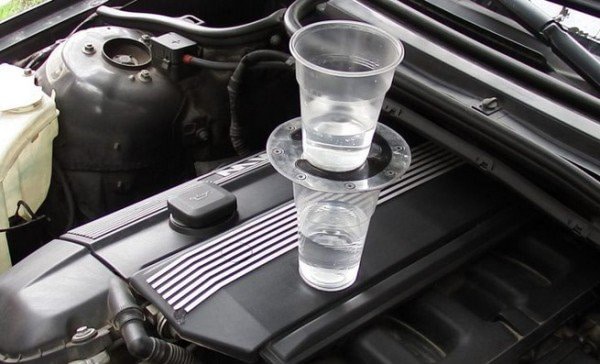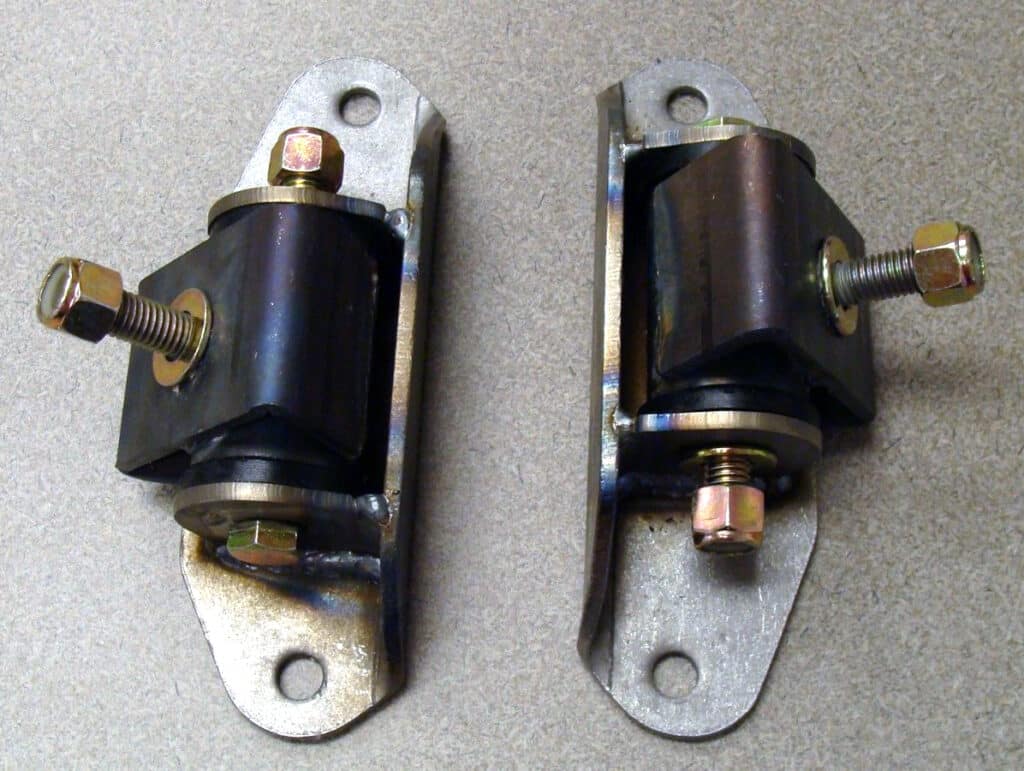Motor mounts play an integral role in reducing your car’s noise, volume, and harshness levels, otherwise known as NVH. Even though they’re designed to last for a very long time, they can fail prematurely.
Being able to tell if your motor mounts are failing is important if you want your car to run as smoothly as possible even in its golden years.
Thankfully, it isn’t very difficult to spot bad engine mount signs. In this article, we’ll discuss everything you need to know about engine mount failure.
What Are Motor Mounts?
Engine mounts serve as an anchor point between the engine and the chassis. Their primary objective is to prevent damage to the motor and the chassis.
The secondary objective is to prevent engine vibrations, noise, and harshness from creeping into the cabin to make for a smooth and quiet ride.
Types of motor mounts include:
- Solid rubber: Solid rubber cushion bolted to the appropriate mounting points via steel-backed plates. Commonly found on passenger cars and trucks.
- Hydraulic: Rubber mounts with a hollow center filled with hydraulic fluid. This allows them to absorb both low and high-frequency vibrations. These can be tuned for optimum dampening.
- Metal: These create a strong and rigid connection between the engine and chassis, thereby reducing parasitic power loss at the drivetrain. These are typically used in different types of race cars.
- Electronic or active: Complicated works of art designed to constantly vary the mount’s stiffness and damping based on the car’s load and speed.
- Polyurethane: A more durable alternative to rubber mounts; they’re almost the same, except using polyurethane as opposed to rubber.
Bad Engine Mount Symptoms
Engine mounts are designed to support the engine and transmission, but they’re not all the same. They come in different designs and use different kinds of technology depending on the car they’re installed on.
Luxury cars typically use active mounts. These are designed to vary their stiffness and damping characteristics to suit the engine’s power load.
Regardless of what type of motor mounts your car has, we recommend looking out for the following signs to see if they’re worn out.
- Excessive vibrations
- Abnormal vehicle movement
- Unusual noises
- Uncomfortable ride
- Irregular engine position
Usually, it is a combination of one or more of these signs that confirms if you have failing engine mounts.
Excessive Vibrations

Because these auto components are designed to reduce NVH levels, their failure, as you’d expect, becomes quite noticeable.
If you experience unusually high levels of vibration seeping through to the cabin, it is most likely because of worn-out motor mounts.
However, an aging interior with improper insulation and rattly parts can also cause NVH levels to rise.
To confirm if the vibrations are caused by faulty mounts, you need to observe the engine when it’s running.
If it is noisier and shakier than usual, then it is a confirmed case of failing motor mounts.
Abnormal Movement
Another symptom is slightly odd handling, especially at the front end.
Engine mounts are designed to hold your engine in place. If they malfunction, you will feel the effects as you drive.
You may notice the engine feeling unsettled as you accelerate, turn, or brake hard.
Irregular Engine Position With a Shaky Start
If you notice that your engine engine feels misaligned or lurches as you turn it on or off, it’s most likely a faulty mount. It’s almost like a generator or an air compressor, where the whole unit vibrates violently as you turn it on or off.
In most cases, the initial lurch then proceeds to settle into a continued vibration, which can be felt at idle and in a specific powerband.
Unusual Noises

Engine mounts are made of metal and rubber. If they wear out to a point where they come into contact with the surrounding parts, you will notice clunking sounds from the engine bay.
The noise is very prominent and will continue as you use your car. It might even get worse as the engine moves around when executing a turn or while accelerating.
It’s worth noting that this sound should not be confused with coilover clunk or some issue with your suspension system.
Vibration and harshness are an intrinsic element of internal combustion engines. They’re going to vibrate no matter what you do, and the motor mounts are simply there to contain the vibrations as much as possible.
Uncomfortable Ride
If you have worn-out mounts, there’s a good chance that your ride quality will deteriorate to some extent.
It may not be noticeable in every instance, but if you feel a shake or a thud when changing gears, then it’s time to have them checked.
This jolting sensation can also be caused by a faulty transmission. But when it is a case of bad motor mounts, these vibrations tend to be pretty severe at highway speeds or in any situation where the engine is at high RPM.
How to Check Motor Mounts

The best way to check your motor mounts is to visually inspect them. Look for cracked, loose, or broken brackets; loose or missing bolts, collapsed rubber, or fluid leaks. The latter is particularly important when it comes to hydro mounts.
One way to check your mounts is by using the transmission; put it in drive and lightly load the engine while keeping the other foot on the brake. If you notice excessive engine movement, there’s a good chance you have loose engine mounts.
Another way is by using a floor jack and a plank of wood. Place it under the oil pan of and raise it in very small increments to raise the engine up while it’s running.
If doing this makes the cabin vibrations go away temporarily, then it indicates that your motor mounts are either out or on their way out.
What Causes Motor Mounts to Go Bad?

As mentioned earlier, wear and tear can cause them to go out, sometimes prematurely. This is usually the case with cars that have been in a head-on collision. This can even be caused due to underbody damage.
Another possible reason for premature engine mount failure is driving style. Improper gear shifts, over-revving, and aggressive driving will take a toll on the internal components over time.
It may not be a direct cause, but suppose a seal breaks and causes an oil leak; it can come into contact with the mounts, which will soften the rubber over time and lead to premature wear.
So make sure to look for leaking mounts and avoid aggressive shifting when not necessary.
How Long Do Motor Mounts Last?

Motor mounts are only ever checked if there’s a problem. Most service centers recommend changing them after 5-7 years, depending on the make and model.
However, most of them run fine for anywhere around the 8-10 year mark, as long as the car remains well-looked-after.
Generally, they tend to last a very long time, with some even remaining functional for the entirety of the car’s lifetime.
As for whether to replace all of them or not, it’s not necessary to replace them all if it’s just 1 of them is bad. That said, it is definitely a good form of preventative maintenance to replace all of them at the same time.

It’s worth mentioning that replacement mounts (even new OEM units) may or may not be of the same construction or build quality as the original. Also, motor mount replacements are not cheap, at least on some cars.
Electronically controlled ones are expensive, with some units costing over $500. Solid rubber or PU ones, however, are relatively cheaper, depending on the make and model.
Even then, the average cost of replacement falls between $200 and $500, including labor.
Can You Drive With Broken Engine Mounts?
We don’t recommend driving with failed motor mounts primarily because it might lead to engine damage, which will cost a lot more to fix. Bad engine mounts will also affect the transmission.
A shaky engine might cause other damage, such as snapped radiator hoses or fan belts. It can even damage other subframe components and lead to yet another expensive repair bill.

The most important reason to not drive with bad mounts is to avoid the safety risk of poor handling in the event of a difficult maneuver. Worn motor mounts might even snap and pose a threat to other vehicles on the road.
Concluding Thoughts
If you find that your car’s NVH levels have been getting worse over time, you know where to look first. It makes a world of difference when you replace faulty mounts.
How long did your factory engine mounts last? Let us know by leaving a comment below! If this article helps you, do share it with your friends on Facebook, Reddit, and your favorite car forums. We appreciate your support!

